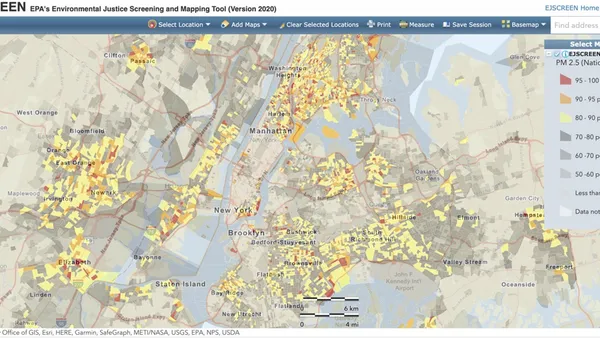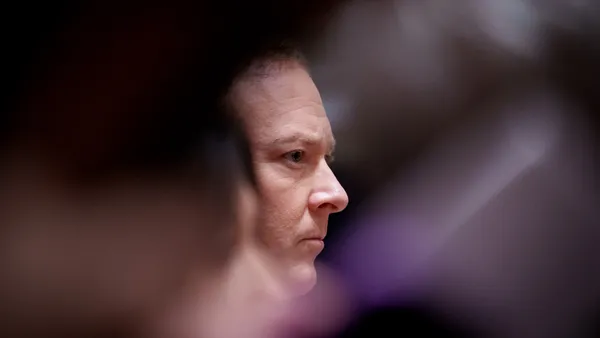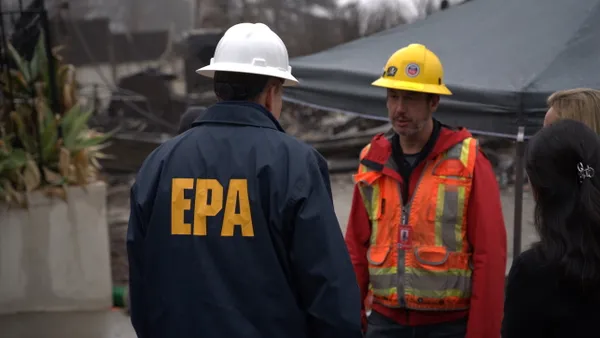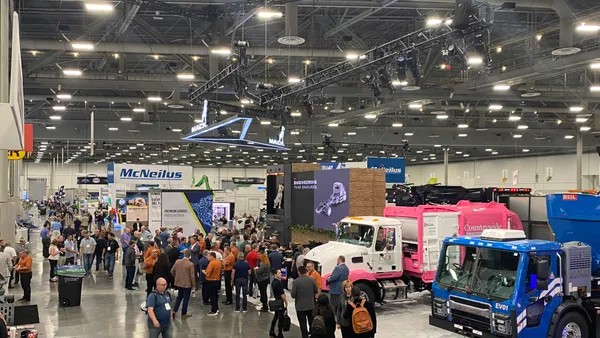Waste Connections is doubling the level of greenhouse gas emissions it’s seeking to reduce, while continuing work toward other recent emissions targets, according to its 2023 sustainability report.
Last year, Waste Connections announced two new goals related to reducing scope 1 and 2 emissions as well as emissions intensity. It has nearly achieved the first of those goals, which calls for decreasing scope 1 and 2 emissions by 15% by 2033.
The 2023 report, reflecting data from 2022, also highlighted Waste Connections’ progress on recycling collection, renewable natural gas facility construction and PFAS management in leachate, as well as progress on employee initiatives such as raising its minimum wage and offering more scholarships, training and development.
Goal: Decrease scope 1 and 2 GHG emissions 15% by 2033
Update: Reduced absolute scope 1 and 2 emissions by 14% in 2022
Following this year, the company is “resetting the bar” to achieve a higher reduction of 30%. "Our 2022 results demonstrate that we can achieve significant progress towards sustainability-related objectives, including emissions reductions, while also delivering outsized growth,” wrote president and CEO Ron Mittelstaedt in a statement. Waste Connections is also in the process of validating its emissions reduction targets with the Science Based Target initiative (SBTi).
For 2022, Waste Connections reported scope 1 emissions of 4.81 million metric tons of CO2 equivalent, down from 5.6M in 2021. Scope 2 emissions were 49,805 metric tons of CO2e.
The majority of Waste Connections’ scope 1 emissions come from landfills, and the company expects to invest about $200 million in completing a dozen RNG facilities in the next few years. Three such facilities are expected to be complete later in 2023 and the rest are expected to come online by 2026.
Waste Connections continues to invest in fleet efficiency initiatives such as using compressed natural gas fuel trucks. Its fleet includes one hybrid electric truck, and the company looks “forward to testing fully electric collection trucks.” Waste Connections’ proportion of CNG fuel vehicles dropped to 10% in 2022, compared to to 11.9% from the previous year.
Goal: Achieve continuous improvement in scope 1 and 2 emissions intensity
Update: Achieved a 27% reduction in emissions intensity ‘in spite of outsized revenue growth’
Emissions intensity is calculated based on a company’s scale. According to Waste Connections, it generated 674 metric tons of CO2 equivalent per $1 million of revenue in 2022. The company reports it has reduced emissions intensity by 40% since 2019.
Other environmental goal updates:
These 15-year targets use 2018 as the baseline year.
- Goal: Increase “resources recovered” by at least 50%. Waste Connections reported recycling 2.18 million tons of material in 2022, up 18.5% from the previous year. The goal is to recover 2.31 million tons of material. The company expects a combination of new MRF equipment, such as optical sorters and robotics, along with “opportunistic acquisitions,” will help increase collection.
- Goal: Increase biogas recovery by at least 40%. The company recovered 29 billion cubic feet of biogas in 2022, slightly less than the 29.2 billion cubic feet it recovered in 2021. The target is 36.7 billion cubic feet.
- Goal: Process at least 50% of landfill leachate on site. The company reports processing 38.5% on site in 2022. It highlighted its recent efforts to treat per- and polyfluoroalkyl substances in leachate through foam fractionation technology at multiple landfills. It also opened two new leachate treatment plants in 2022.
Employee-related goal updates:
- Goal: Reduce safety incident rate by 25%. Waste Connections reported 15.62 incidents per 200,000 hours worked in 2022, which was up slightly from the previous year’s 15.15. The company’s goal is a rate of 12.78 or less.
- Goal: Continuously improve voluntary turnover. The turnover rate was mostly flat at 21.4% in 2022 compared with 21.1% in 2021. It’s higher than the 14.6% recorded in 2020 and 17.8% in 2019.
- Goal: Continuously improve “servant leadership” scores. This score, based on employee feedback and listed on a 1-5 scale, reflects Waste Connections’ goal to “invert the traditional management hierarchy” and urge people in leadership roles to “serve their employees both professionally and personally.” The score went up slightly in 2022 to 4.25 and has increased each year since 2018.















